Blog
Visible Blog
Resources to support ambitious founders and the investors who back them.
All
Fundraising Metrics and data Product Updates Operations Hiring & Talent Reporting Customer Stories

investors
Operations
3 Ways to Better Support Your Portfolio Companies
We surveyed founders in our community and asked, “How likely are you to refer your current lead investor(s) to fellow founders?” (AKA — NPS score).
The results were shocking with an NPS score of 23. An NPS score of 23 falls below the average for the airline industry. Not a great industry to be compared to in terms of customer satisfaction scores.
As the venture space continues to grow and mature, the importance of investor’s adding value and opportunities is higher than ever. In order to better help investors support their portfolio (and hopefully move that NPS score up) we’ve put together 3 tips below:
Systemize your data collection
As Peter Drucker put it, “if you can’t measure it, you can’t improve it.” In order to best help the founders in your portfolio, you need to have a system in place to collect data, quantitative and qualitative, so you can jump in and help when needed.
Setting up a system requires a fine balance between being beneficial for your fund and being efficient and easy on the founder. With that said, it is important you only collect what is absolutely necessary (for founders who are already taking the time to send investor updates you want to make sure they are not duplicating efforts). What we suggest requesting from a founder to start:
With Visible for Investors, founders can fill out simple Update Requests from their investors (like the example above) and use their data to fuel future investor Updates. Learn more about Visible for Investors here.
Take action on the data
Collecting portfolio company data is only half the battle. Once you have the data in hand (qualitative or quantitative) you need to make sure you are closing the loop.
Keep an eye on qualitative data
As we displayed in our example request above, best-in-class investors are specifically requesting a “Where can we help/problems” section.
Being sure you can track and manage this data over time will improve your ability to take action. By setting up a view in Visible or exporting answered requests, you can keep your eye on where your companies stand and where your help is needed.
Metric alerts and benchmarking
When collecting metrics and data from your companies on a recurring basis, you’ll be able to uncover trends for individual companies and your portfolio as a whole.
If you notice a core metric for a specific company is slipping month over month, it might be a good time to intervene and see if they need a hand to tackle a problem.
Fundraising and Introductions
Startups are in constant competition for 2 resources — capital and talent. As an investor, you will oftentimes see founders need help with 1 (or both) of those 2 areas. Being able to make an introduction to a potential investor or new hire can have a huge impact on a startup’s growth.
Being able to open up your rolodex will be a huge win in the eyes of your founders.
On the flip side, you can use the data from your portfolio as a whole to help benchmark and uncover new trends to the rest of your portfolio. For example, if you see a go-to-market strategy picking up steam with a few companies, it can be a good time to introduce the ideas to other companies that might benefit from the strategy.
Learn more about how you can use Visible for Investors to better support your portfolio companies here.
Make the most of it
Setting up a system to collect data from your portfolio companies is no easy feat so you’ll want to make sure you are getting the most value out of the data as possible. Outside of helping your portfolio companies, you do have your own set of investors you need to report to.
Having a strong system to collect portfolio data is a natural backbone to power your next LP report. Building strong rapport with your LPs is a surefire way to make sure your next fundraise goes smoothly.
Using Visible, you can roll up your data and use Updates to report to your LPs. No exporting or additional data needed. Simply take the data from your portfolio, add in any necessary fund/investment data, and keep your LPs in the loop. Check out an example report here.
Check out more LP update templates here.
Learn more about using Visible for Investors to report with your LPs here.
Stay engaged with your founders right from your pocket. Monitor your portfolio and be the value-add investor you want to be with Visible for Investors. Schedule a demo to learn more here.

founders
Fundraising
How to Raise Capital Using RUVs ith Jeremy Sonne
As AngelList puts it, “Rollup Vehicles (RUVs) are special purpose vehicles (SPVs) that allow founders to consolidate multiple smaller investors into a single investing entity. It saves founders (and their legal teams) the hassle of collecting funds and signatures from many individuals, both to close the round in question and on future stockholder consents.”
Jeromy Sonne, CEO and Founder of Decibel, recently leveraged RUVs and online communities to help raise a financing round. Jeromy was able to raise ~$150k from 41 different investors. The best part? He didn’t have to do a single investor call.
Jeromy joined us to break down how he raised using an RUV. A few topics we discussed:
What is a roll-up vehicle
How do RUVs compare to SAFEs and other instruments
How they can complement a financing round
What tools and resources exist for raising via RUVs
How Jeromy raised using an RUV

founders
Fundraising
Our 5 Favorite Quotes About Pitch Decks from the Founders Forward
On season 2 of the Founders Forward Podcast, we interviewed 10 different startup investors. We covered everything from storytelling to mental health.
However, fundraising was a constant theme throughout the season. Many of our guests broke down their thought processes and what they like to see from founders. As pitch decks continue to become an integral part of a fundraise, we dug into how different guests view and look for in pitch decks from potential investments.
Check out our 5 favorite takeaways about pitch decks from season 2 below:
Brett Brohl on the 4 Slide Pitch Deck
Brett Brohl of Bread & Butter Ventures shares the idea of using an email intro deck. He suggests a 4 slide deck that your network can use to forward and share with potential investors. The idea is that a 4 slide deck gives a potential investor enough context to be intrigued but not too much information where they will already have a strong opinion on your company before meeting you. Listen to the full episode here.
Elizabeth Yin on Using Pitch Decks for Conversation
Elizabeth Yin of the Hustle Fund makes the case that founders don’t actually need a pitch deck. However, she does recommend that founders have a 5 slide pitch deck to use during the fundraising process. This gives the investor enough information but can lead to a conversation as opposed to a pure pitch. Listen to the full episode here.
Kristian Andersen on Crafting Your Narrative with a Pitch Deck
Kristian Andersen of High Alpha shares why a pitch deck is never a linear template. Kristian suggests that founders think about the story of their company and pitch before building their deck. The story should be applied to your pitch and can help build out the direction of your pitch deck. Listen to the full episode here.
Ezra Galston on What to Share Before a Meeting
Similar to Elizabeth Yin, Ezra Galston of Starting Line does not have a strong opinion on the medium founders use when sharing information with investors. However, he wants to make sure that he has enough context before having a conversation with a potential founder. Listen to the full episode here.
Gale Wilkinson on Must-Haves in a Pitch Deck
Gale Wilkinson of Vitalize recommends that founders have a pitch deck or one-pager that founders can share with potential investors. Gale goes on to break down the slides that she believes founders should always improve in their pitch deck. Listen to the full episode here.
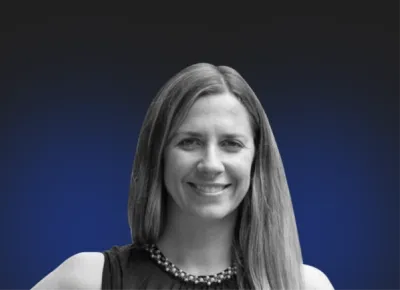
founders
Fundraising
Reporting
How to Build an Investor List with Gale Wilkinson of Vitalize
On episode 10 of the Founders Forward Podcast, we welcome Gale Wilkinson. Gale is the Managing Partner at Vitalize Ventures — “an early-stage fund & angel community investing in software focused on future of work and future of learning.”
About Gale
Before starting Vitalize, Gale started her career in venture capital at Irish Angels. Gale is one of our favorite follows on Twitter where she shares tactical tips for founders on fundraising. She joins us to break down some of her most popular threads on Twitter and offers countless takeaways to help early-stage founders fundraise — covering everything from list building to ownership benchmarks.
Our CEO, Mike Preuss, had the opportunity to sit down and chat with Gale. You can give the full episode a listen below (Or listen on Spotify, Apple Podcasts, or any standard podcast player):
What You Can Expect to Learn from Gale
How VC has changed over the last 10 years
Why Vitalize is launching an angel group
Why list building is vital to a successful fundraise
How many investors a founder should expect to talk to during a raise
What catches her eye in a cold email from a founder
What she looks for in a pitch deck
Why she cares about financial modeling at the early stages
Related Resources
Gale’s Twitter
Gale’s LinkedIn
Vitalize’s Visible Connect Profile
[Thread] Gale on Cold Emails
[Thread] Gale on Data Rooms
[Blog] How Long Does Fundraising Take?
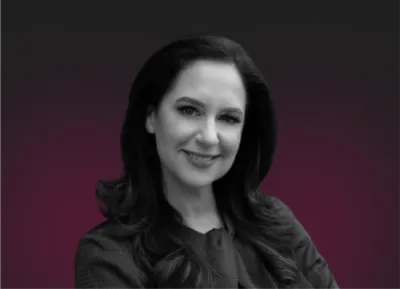
founders
Fundraising
Determining if an Accelerator is Right For You with Lisa Besserman of Expa
On episode 9 of the Founders Forward Podcast, we welcome Lisa Besserman. Lisa Besserman is the Managing Director at Expa — an accelerator based in Austin, TX dedicated to supporting pre-seed companies.
About Lisa
Lisa started her career as an economist but ultimately found her way to founding Startup Buenos Aires — an accelerator located in Buenos Aires to help support startups in Latin America. Since then, Lisa has made the move to Expa where is the managing director of their accelerator. Between her time at Startup Buenos Aires and Expa, Lisa has a wealth of knowledge related to all things company building, fundraising, and leading — especially at the early stages.
Our CEO, Mike Preuss, had the opportunity to sit down and chat with Lisa. You can give the full episode a listen below (Or listen on Spotify, Apple Podcasts, or any standard podcast player):
What You Can Expect to Learn from Lisa
How founders can best connect with investors
How to determine if an accelerator is right for your business
What kind of companies Expa is interested in funding
Why founders should try their best for a warm intro
What she likes to see in a cold email
How to determine how much to raise
What she thinks the future of VC looks like
Related Resources
Lisa’s Twitter
Lisa’s LinkedIn
Application to apply for Expa
Expa’s Visible Connect profile

founders
Fundraising
How to Raise Your Series A With Michael Rangel of Novo
Building a company is difficult. Being a founder can almost feel impossible. There are very few people that have been in the shoes of a founder. As a startup founder, there is no one better to learn from than the person that has been there before.
The team at Novo recently raised a $41M Series A. Novo’s CEO, Micheal Rangel, was generous enough to join us and talk about how they raised it. Micheal breaks down everything from his preparation to pitch to metrics and more.
A few topics we discuss:
Determining if you are ready for your Series A
How to prepare yourself for a raise
How to prepare your company for a raise
How to prepare your pitch and documents for a raise
How to craft your Series A pitch deck and narrative

founders
Fundraising
The Past, Present, and Future of VC Funding with Anne Dwane of Village Global
On episode 8 of the Founders Forward Podcast, we welcome Anne Dwane. Anne is the partner and co-founder at Village Global — an early-stage venture capital firm backed by successful entrepreneurs.
About Anne
Anne has a unique perspective on the VC space as she founded her first successful startup, Military.com, in the 1990s. After Military.com, Anne founded a startup later acquired by Chegg where she helped scale as they went public. Anne joins us to share what she has learned from time in the space. We discuss who founders should look to for advice, the thought process behind the roster of Village Global’s LPs, and how founders can build a fundraising process.
Our CEO, Mike Preuss, had the opportunity to sit down and chat with Anne. You can give the full episode a listen below:
What You Can Expect to Learn from Anne
What Anne learned from helping scale Chegg
How the startup world has transformed since her time founding Military.com in the 90s
Why founders should look for a “thought partner”
Why founders funding founders is a good thing
How to build a fundraising process
What she likes to see in a cold email from a founder
Related Resources
Anne’s Twitter
Anne’s LinkedIn
The Village Global application
Village Global’s Visible Connect Profile
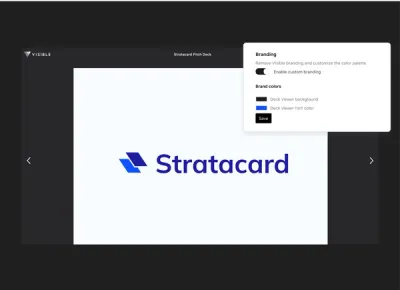
founders
Fundraising
Product Updates
Introducing Decks — Manage Your Raise From Deck to Check
The pitch deck is the core marketing asset that jumpstarts any fundraising effort. It acts as the catalyst for connection, conversation, and relationship building.
How Pitch Deck Sharing Works
We talked to hundreds of founders, and three problems emerged around pitch deck sharing:
I’m not sure how prepared a potential investor is before heading into a meeting.
I’m under-networked. I share my deck to get meetings but want to understand who is engaged.
I iterate on my deck every hour. Sharing the latest version is a pain.
Introducing Visible Pitch Decks
Today, we are launching Decks. A dead-simple way to host and share a pitch deck on Visible. Decks are completely integrated with our fundraising crm and leading investor updates platform. You’ll be able to set customized sharing permissions, notifications when investors view your deck, upload new versions without clicking a button, and understand how potential investors have engaged with your content.
Just as a sales team has dedicated tools for their day-to-day, founders need dedicated tools for managing the most expensive asset they have, equity. Our community can now find investors, track a fundraise, and share a pitch deck directly from Visible and completely integrated.
Want to see a Deck hosted on Visible in action? Take a look here.
Whether we are building fundraising automation with our Zapier Connection or crafting integrations with companies like ProfitWell, we are driven by giving founders a better chance of success. It is going to be a very fun fall 😉
Up & to the right,
Mike & The Visible Team
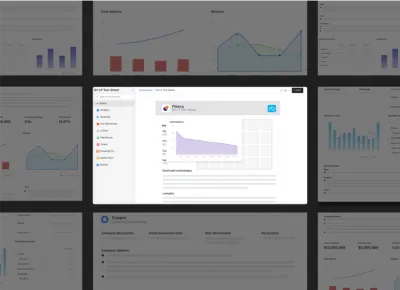
investors
Reporting
4 Tear Sheet Examples to Give You Inspiration for Your Next LP Report
Tear Sheets (also known as one-pagers or fact sheets) are an effective way to communicate the performance of your portfolio on an individual company level. In Venture Capital, tear sheets are commonly shared with Limited Partners (LPs) on a monthly or quarterly basis to keep investors updated on company performance.
Common Tear Sheet Elements
Some common elements that should be included in tear sheets are:
Investment performance – Cost, value, board information
Financial metrics – Revenue, Cash Balance, Burn Rate, Runway
Company-specific KPIs – Keep this consistent for each reporting cycle.
Commentary – Add your own analysis on company metrics and performance.
Company context – Include details such as the company description, sector, HQ location for context.
Download Our Tear Sheet Examples
Download our packet of Tear Sheet Examples built with Visible.vc’s software for investors for inspiration before your next reporting cycle:
With Visible.vc you can create professionally formatted Tear Sheets for your entire portfolio within minutes. To learn more, schedule a demo with our team.

founders
Fundraising
Operations
Customer Stories
How Design Can be a Competitive Advantage with Kristian Andersen of High Alpha
On episode 7 of the Founders Forward Podcast, we welcome Kristian Andersen. Kristian is a founder and partner at High Alpha, a venture studio located in Indianapolis.
About Kristian
Before launching High Alpha, Kristian founded the prolific design agency, Studio Science. During his time at Studio Science, Kristian primarily served software companies which ultimately led to him being a founding partner at High Alpha. Between Kristian’s experience at Studio Science and his time at High Alpha helping launch 30+ companies, it is safe to say he knows a thing or 2 about design and storytelling. Kristian joins us to break down how design can be a competitive advantage, the importance of storytelling in business, the High Alpha Studio model, and much more.
Our CEO, Mike Preuss, had the opportunity to sit down and chat with Kristian. You can give the full episode a listen below:
What You Can Expect to Learn from Kristian:
How the High Alpha Studio models work
What kind of co-founders they look for at High Alpha
How design can be a competitive advantage
Why storytelling is important in business and fundraising
Why Coco Chanel, Teddy Roosevelt, and Ralph Lauren are great storytellers
What he likes to see in a cold email from a founder
Related Resources:
Kristian’s Twitter
Kristian’s website
Apply to become a High Alpha Co-founder
High Alpha’s Visible Connect Profile
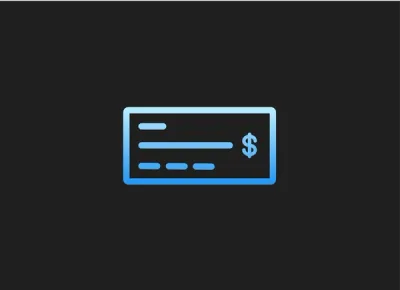
founders
Fundraising
Reporting
10 Fundraising Takeaways from Season 2 of the Founders Forward
We are just over halfway through season 2 of the Founders Forward. We’ve talked to 6 awesome investors and have dug into everything from pitch decks to mental health.
To recap the first half of the season, we’ve shared our favorite quotes and thoughts from the season so far below. If you’d rather skip to a specific episode, you can do so below:
The Supply & Demand of Venture with Kenn Shasta
One of the questions we have asked all guests this year is, “What is one tip to help founders create momentum in their fundraise?” We’ve heard a flurry of great answers but really love the advice from Kenn So of Shasta Ventures.
Kenn recommends founders start to include target investors on their monthly/quarterly Updates. This way investors already know what’s going on and have already build a trend line when it comes to your company. Give the full episode a listen below:
Creating Momentum in Your Fundraise with Brett Brohl
One of the most common mistakes we see founders make is underestimating the amount of time it takes to complete a fundraise. From finding and researching investors to signing a term sheet can take 5+ months. We love how Brett Brohl of Bread & Butter Ventures broke down a fundraise into 5 months, or 1-3-1:
1 month — Researching and finding the right investors
3 months — Actively pitching investors
1 month — Time to close after it is fully committed
To learn more fundraising tips and advice for seed-stage founders, give the full episode with Brett a listen below:
How to Create FOMO During a Fundraise with Elizabeth Yin
When going out to raise a round of capital, most founders assume that you should try to find a few large investors that can fill the round so you can be done. However, Elizabeth Yin of Hustle Fund argues that small checks can be a really powerful tool.
While there are certainly some downsides, smaller checks allow you to create momentum and build your network. Elizabeth shared an example of a portfolio company that landed one small investor who ended up introducing them to the majority of their investors. Give the full episode with Elizabeth a listen below:
Building a Calm Company with Tyler Tringas
One of the questions we have asked all guests is, “What catches your eye in a cold email from a founder?” Tyler Tringas of Calm Company Fund had a great and unique take. Tyler likes to see a quick video of the product actually working. This can help create excitement and give him an idea of the state of the product.
Give our episode with Tyler a full listen below:
How Founders Can Address Their Mental Health with Ezra Galston
Before sitting a meeting with an investor there is an expectation that you will send over some kind of pitch deck or data or synopsis. Some investors will tell you full deck. Others might suggest a mini-deck. Regardless of the medium, Ezra Galston of Starting Line just wants enough context to have a good conversation.
Sending over enough context beforehand enables Ezra to understand some basics and have enough information to dig into questions and have a strong conversation. Give our interview with Ezra a full listen below:
All Things Community-Led Growth with Corinne Riley
A seed-stage and Series A fundraise can feel quite different for a founder. At the seed stage you likely have little to no revenue, few metrics, and a simple product. By the time you get to your Series A, you likely have product-market fit and have a solid revenue base. While the business might look different, some parts of your pitch stay the same.
We love how Corinne Riley of Greylock breaks down constant things she looks for in a pitch, regardless of stage. Give the full episode with Corinne a listen below:
How Design Can be a Competitive Advantage with Kristian Andersen
A successful pitch and story can make or break a fundraise. As the co-founder of the venture studio, High Alpha, Kristian has helped countless early-stage companies craft their narratives and build their pitch deck.
In our interview with Kristian, he points out the importance of starting with your story when crafting your pitch deck.
The Past, Present, and Future of VC Funding with Anne Dwane
As a first-time founder, finding someone you can lean on for advice and experience can be crucial. Anne Dwane of Village Global recommends that founders can find a “thought partner.” This might be a peer that is someone who is at a similar stage or only a step or 2 ahead.
Determining if an Accelerator is Right For You with Lisa Besserman
The importance of being able to send a strong cold email was a consistent topic with all of our guests this season. More than anything else, Lisa Besserman of Expa likes to see a deck from a founder. In our interview with Lisa, she breaks down what specifically she likes to see in a deck as well.
How to Build an Investor List with Gale Wilkinson
Fundraising generally mirrors a traditional B2B sales funnel. Just like a sales funnel, you need leads and a strong customer profile at the top to fuel your process. Gale Wilkinson of Vitalize suggests that founders have a running list of investors that are a fit for your business.

investors
Operations
5 Actionable Steps to Improve Diversity at Your VC Fund
If you’re working in Venture Capital or are fundraising from VC’s, the odds that you’ve experienced a lack of diversity in race, gender, and as a result ideas, is very high.
According to a survey by Richard Kerby at Equal Ventures, the VC industry is comprised of 58% white men, followed by 20% Asian men, 11% white women, 6% Asian women, 2% Black men, and 1% Black women, 1% Latinx men, and nearly 0% are Latinx women.
And when you consider “who controls venture capital dollars”, in other words, “who gets the bulk of the carried interest, salary… and ultimate control over which startups get funded”, it’s 93% white males. (Source)
Source: James L. Knight Foundation; data extrapolated from Figure 41 based on Preqin’s data set, which defines venture capital as a subset of private equityH VENTURE PARTNERS
Meanwhile, a report by McKinsey and Company shows that diverse working environments financially outperform homogenous workforces by as much as 35 percent.
The Venture Capital industry is missing out on diversity of people, ideas, ventures, and ultimately higher returns.
If you’re interested in helping improve diversity at your VC fund, check out these resources to start taking actionable steps forward.
1) Increase Your Individual Knowledge about Diversity and Inclusion
It’s important to remember to take ownership of your diversity and inclusion education process rather than burdening minority groups with the responsibility of teaching you or correcting you.
You can start by checking out this curated list of relevant articles on diversity and inclusion for both founders and funders. The list also includes a list of organizations you can work with to help improve diversity and inclusion including Parity.org, NVCA VentureForward, and Project Include.
These resources are curated by Founders for Change, a group of inspiring founders who are dedicated to diversity and inclusion within their companies, and desire greater diversity at the highest levels of VC firms. Learn more about Founders for Change here.
2) Encourage Your Fund to Take Part in the Diversity VC Standard Program & Certification
The Diversity VC Standard program is a great way to strategically set diversity goals for your fund while also increasing the knowledge of D&I practices for your whole team. It was started in 2020 and pioneered by 15 leading funds across Europe and Canada. The certification sends signals to the rest of the ecosystem that your fund follows the best D&I practices.
The program walks VC’s through three stages:
Assessment – A guided run through of your fund’s current policies and practices
Consultation – Curated advice and recommendations on next steps according to fund targets
Certification – To Level 1 (setting a benchmark above industry average) or Level 2 (leading the way on changes to D&I policy)
For more information about Diversity VC follow this link.
3) Broaden Sources of Dealflow Beyond Traditional Channels
While cold outreach does sometimes work, most deals are funded through a warm introduction from someone in your network. For this reason, it’s a good idea to reflect on who comprises your network and decide if you need to branch out.
Some advice from Sarah Millar, Principal at City Light VC and head of Diversity VC’s US Chapter —
Be intentional about building relationships with funds that focus on diverse founders and leverage those to grow your own networks. Setting up regular catch-ups, co-investing in their deals, and sharing deals is always what works in VC – so being intentional about who you do it with and what their focus areas are is going to pay dividends.
Harlem Capital has put together a thorough database of diverse investors that is a great starting point.
You can also broaden your dealflow sources by checking out these resources: Crunchbase’s Diversity Spotlight, the Black Founder List, Latinx Founders Collective, Female Founded Club.
4) Guide Portfolio Companies on How to Build an Inclusive Culture
As a VC, you’re oftentimes in a position to influence your portfolio companies as they grow. Get informed about what makes a diverse and inclusive culture so you can guide your portfolio companies as they build their teams.
A great place to learn about inclusive cultures is by checking out the resources put together by Project Include. The non-profits mission is to give everyone a fair chance to succeed in tech by using data and advocacy to accelerate diversity and inclusion solutions.
Project Include has even curated recommendations on each step in the process of building an inclusive culture, including how to lead as a VC.
Leading the change to improve diversity at your VC fund may not be easy but we hope these resources serve as a source of motivation and encouragement.
5) Explore Diverse Networks when Making your next Fund Hire
When looking to add talent to your VC firm, start by exploring organizations on a mission to increase diversity in Venture Capital.
Vencapital is empowering the next generation of investors by providing training programs catered specifically towards women and minorities looking for entry-level roles in VC.
Chicago:Blend is on a mission to advance diversity, equity and inclusion in Chicago’s venture capital and startup community. They publish annual diversity data, help underrepresented and overlooked professionals break into VC, and deploy necessary DEI resources to the community.
You may also like How to Hire for your First VC Platform Role.
Do you have suggestions for other steps or resources you think we should include? Let us know!

founders
Fundraising
How to Model Your Seed Round With Yin Wu of Pulley
Raising capital in the early days of your business can have major implications later in your company lifecycle. Yin Wu, CEO of Pulley, joined us to walk through what to consider when determining how much to raise, setting valuations, and more.
Yin joins us to talk about all things fundraising, cap tables, valuations, and dilution. You can expect to dig into some of the following topics
Who should raise venture capital
What is impacting recent valuations
Raising using SAFEs
Determining how much to raise
Setting your company valuation
How much dilution a seed company should expect to see

founders
Fundraising
Operations
Metrics and data
All Things Community-Led Growth with Corinne Riley of Greylock
On episode 6, season 2 of the Founders Forward Podcast, we welcome Corinne Riley. Corinne is an investor at the prolific venture capital firm, Greylock, where she primarily invests in B2B companies.
About Corinne
Over the course of her career, Corinne has built a knack for helping companies build and develop a go-to-market motion. Corinne has extensive knowledge of community-led growth and helping companies grow at the earliest stages of their business. Corinne joins the show to break down community-led companies and the thought process behind her investment decision-making.
Our CEO, Mike Preuss, had the opportunity to sit down and chat with Corinne. You can give the full episode a listen below:
What You Can Expect to Learn from Corinne
What a community-led company is
How community-led growth can be a moat
What the community commitment curve is
What changes between a seed and series A pitch
What data she would expect to see in a Series A company
What she likes to see in a cold email from a founder
Related Resources
Corinne’s Twitter
Common Room & Uncommon
Corinne’s post on Community-Led Growth
The Business of Belonging
Greylocks’s Visible Connect Profile

founders
Fundraising
Mike’s Note — Progressive Disclosure
Progressive disclosure is an interaction design principle that sequences screens, so users do not feel overwhelmed and inevitably bounce.
Progressive Disclosure & Fundraising
Founders should take note of this principle when reaching out to potential employees and investors. Your goal is always to get to the next step, not get hitched after 2,000 words. If you are connecting with someone for the first time, your goal should be to receive a response. Keep things between 50 to 250 words (just like this note).
As Kunu says, do less.
Use Visible for Your Next Fundraise
No matter the series, size, or timing of your round, Visible is here to help. With Visible, you can manage every stage of your fundraising pipeline:
Find investors at the top of your funnel with our free investor database, Visible Connect
Track your conversations and move them through your funnel with our Fundraising CRM
Share your pitch deck and monthly updates with potential investors
Organize and share your most vital fundraising documents with data rooms
Manage your fundraise from start to finish with Visible. Give it a free try for 14 days here.
Unlock Your Investor Relationships With a Free Starter Account.
Get Visible Free